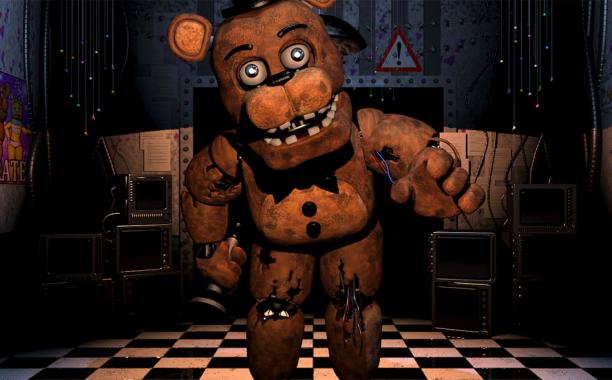Why Video Game Adaptations Are Doomed To Fail

Warner Bros. recently announced they will be adapting the hit horror game “Five Nights at Freddy's” into a feature-length film. Fans of the game are already a little scared — but for all the wrong reasons.
A tale of childhood nostalgia gone wrong, "Freddy's" has players work the graveyard shift at Freddy Fazbear's Pizza, a creepier version of Chuck E. Cheese. The game relies heavily on jump scares and tension to keep the player engaged. It's a wonderfully original game which requires constant vigilance and a fair amount of strategy to survive the night.
But great games do not always make great films. In fact, they rarely do. Video game-to-film adaptations have a notoriously spotty success rate. But producers will jump at anything that has tasted a modicum of success and try to turn it into a movie — there's even a film adaptation of “Angry Birds” in the works. Yikes. Will “Five Nights at Freddy's” be the exception? Doubtful.
READ MORE: Are Live-Action Remakes Of Animated Disney Classics Good Or Bad?
As a medium, film is flexible enough to adapt itself from novels, short stories and even poems. Video games often have double-digit hours of entertainment ready for adaptation, and movies only need to use two. So adapting from video games seems a no-brainer. A well-developed world with rich characters and a plot explicitly made to be as engaging as possible? What could go wrong?
Everything, apparently. Video games can be fun and engaging to play, but a closer look at the plot often reveals them to be either paper-thin or completely nonsensical. Some games use arbitrary checkpoints and set goals simply to get you from firefight to firefight. Others make an honest attempt at plot, but end up with a parade of plot twists (and not always logical ones) to keep pace with the gameplay. But games are usually shielded from plot-hole criticism so long as they keep people playing. Movies don't have that luxury.
Futhermore, video game story structures rarely function like that of a feature film. Games use all kinds of structures to tell a story and keep the controllers moving. Films, on the other hand, are heavily mired in traditional three-act structure. Which isn't necessarily a bad thing, but it can be a hard task to try to cram a plot into a completely different structure.
READ MORE: 'Going Clear' And The Future Of Scientology
More importantly, emphasis on storytelling today relies on character-driven narratives. While top-notch games like “The Last of Us” and “Bioshock: Infinite” offer complex characters, the protagonist of many first-person shooter games is a blank slate. Most of them don't even have a body beyond the sliver of forearm clutching the gun.
Some films have tried to circumvent fan backlash by simply taking the world of a game and building a narrative to fit around it. The idea is that instead of dealing with beloved characters and swiss-cheese plots, a film can create its own story using the lore of a video game's world. Theoretically, this is a good way to attract fans while also being inclusive of non-gamers. Unfortunately, this isn't always the case.
The 2014 adaptation of “Need for Speed” provides a notable example. Though the film was a commercial success that made over $200 million at the worldwide box office (no doubt due to Aaron Paul's starring role), it only managed a 22% on Rotten Tomatoes. Ouch.
Hollywood has tried everything to make the video game adaptation work. But there's one fatal flaw that proves irreconcilable, given the medium of cinema. Games provide immersion storytelling. It doesn't matter if the story doesn't make sense, because the player is in control. Even when the gameplay is linear, players still control the pace of the game. Every fight sequence, every car chase, every camera movement, all choreographed by the player, exactly as they want.
In this sense, “Five Nights at Freddy's” is an interesting case. Players can control almost nothing and remain stationary the entire game. The only controls are cutting back and forth between different video feeds and a panic button that shuts the doors.
READ MORE: The Success Of Biopics, Explained
Still, it's doubtful “Five Nights at Freddy's” will become the maverick adaptation needed to break the streak. The effectiveness of horror games quickly dissipate when the audience is removed from the action. Even watching over the shoulder doesn't provide quite the same tension. “Freddy's” offers little autonomy, but the player is still a part of the game.
Perhaps even more importantly, “Freddy's” seems over-the-top as a film premise. It has all the trappings of a B-horror movie. Cuddly animatronics will most likely seem laughable on the big screen, a far cry from the terror they instill while hunched over your computer monitor in a dark room. Sure, it might bring in viewers, but it will be a tough sell.
Reach staff reporter Nate Gualtieri here.



